How to Choose the Perfect Dog Harness: A Comprehensive Guide for Dog Owners
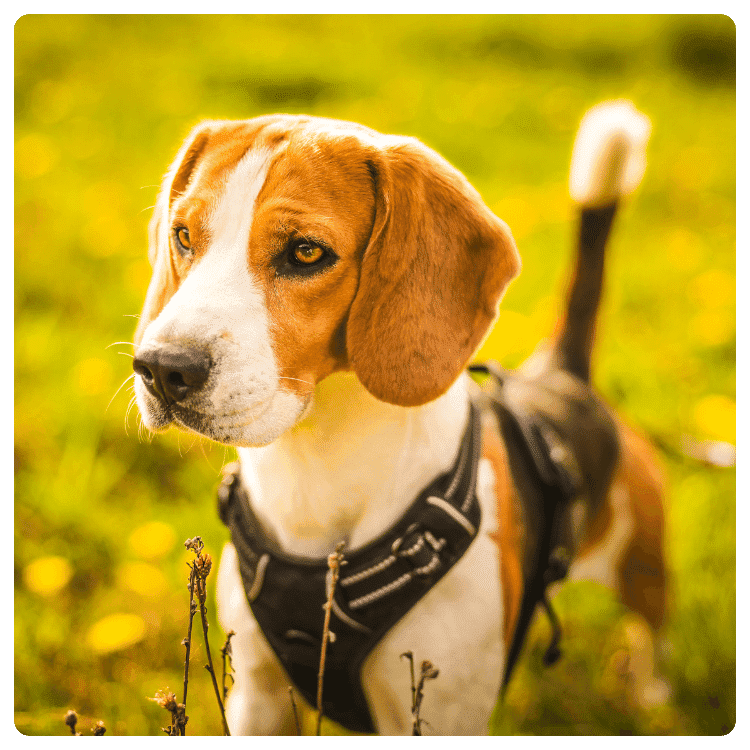
If you’re a dog owner, you know that taking your furry friend for a walk can be one of the best parts of your day. But without the right equipment, it can quickly turn into a struggle. Enter the dog harness—a game-changer in the world of pet accessories. Unlike traditional collars, dog harnesses offer better control, enhanced comfort, and increased safety for your canine companion. Whether you’re dealing with a persistent puller or just looking to improve your dog’s walking experience, a well-chosen harness can make all the difference.
The purpose of this blog is to guide you through the ins and outs of choosing the perfect dog harness for your furry friend. We’ll cover the benefits of using a harness over a collar, explain the different types available, and provide tips on how to find the right fit for your dog. Additionally, you’ll find reviews of top-rated harness models, step-by-step instructions for fitting and adjusting, and expert advice on training your dog to use a harness effectively. By the end of this guide, you’ll have all the information you need to make an informed decision and enhance your walking experience with your dog.
What is a Dog Harness?
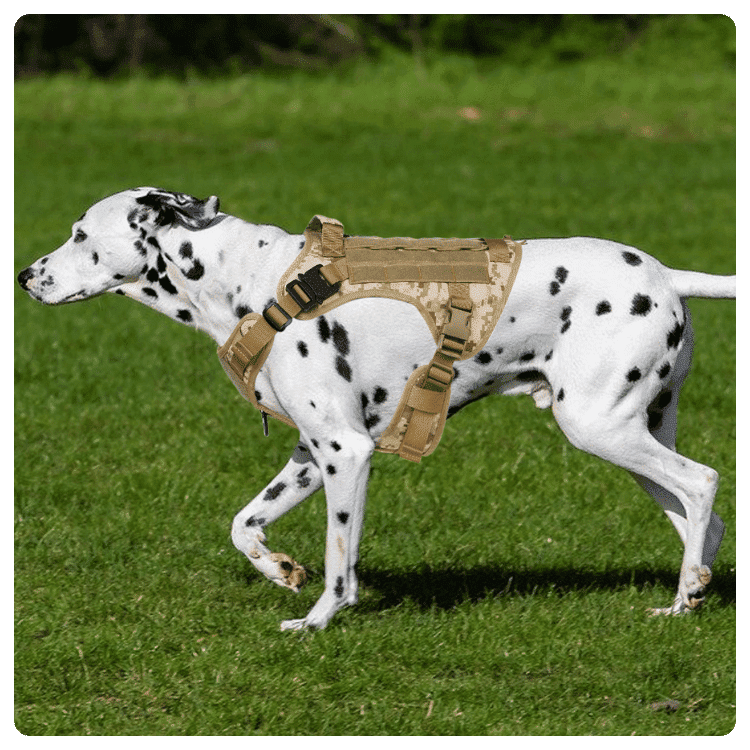
A dog harness is a vital piece of equipment designed to provide a secure and comfortable way to walk your canine companion. Unlike traditional collars that exert pressure on the neck, harnesses distribute the force across the dog’s body, reducing strain and potential injury. They come in various styles and designs, each tailored to meet different needs and preferences.
Types of Dog Harness
1) Y Shape Harness:
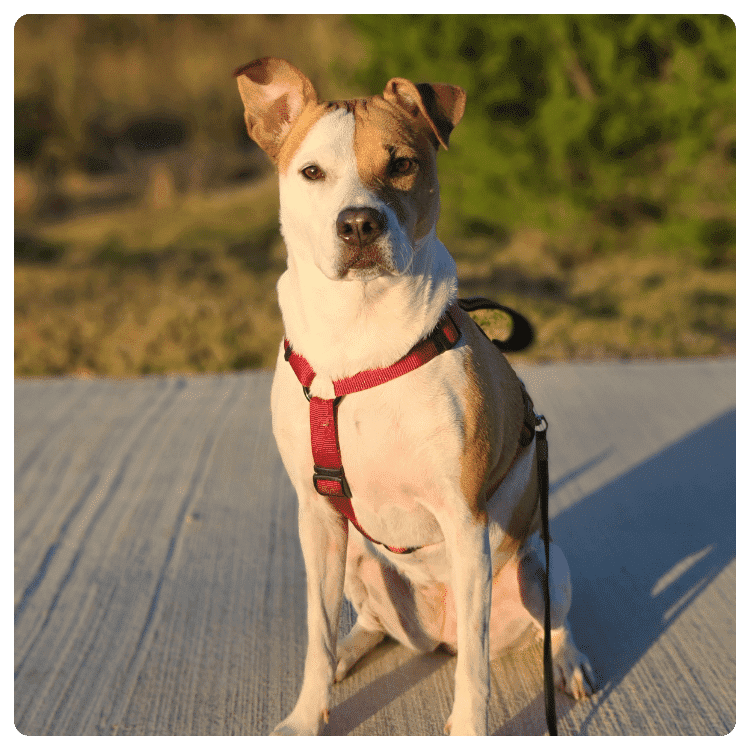
The Y-shaped harness features a chest piece resembling the letter “Y”, with straps extending around the front legs and chest. This design evenly distributes pressure, providing comfort and control, especially for dogs prone to pulling. It’s a versatile option suitable for various body shapes and sizes, offering stability and support during walks.
- Pros: Even pressure distribution, good control for pullers.
- Cons: Fit may vary, some dogs find it uncomfortable.
2) Step-In Back Clip Dog Harness:

The step-in back-clip dog harness combines the convenience of a step-in design with a back-clip leash attachment point. Dogs simply step into the harness, making it easy to put on, especially for those uncomfortable with harnesses over their heads. The back-clip attachment provides stability and control during walks, distributing pressure evenly across the chest and back.
- Pros: Easy to put on, stable during walks.
- Cons: Offers less control than front-clip harnesses, and may not deter pulling effectively.
3) Head Halter Harness
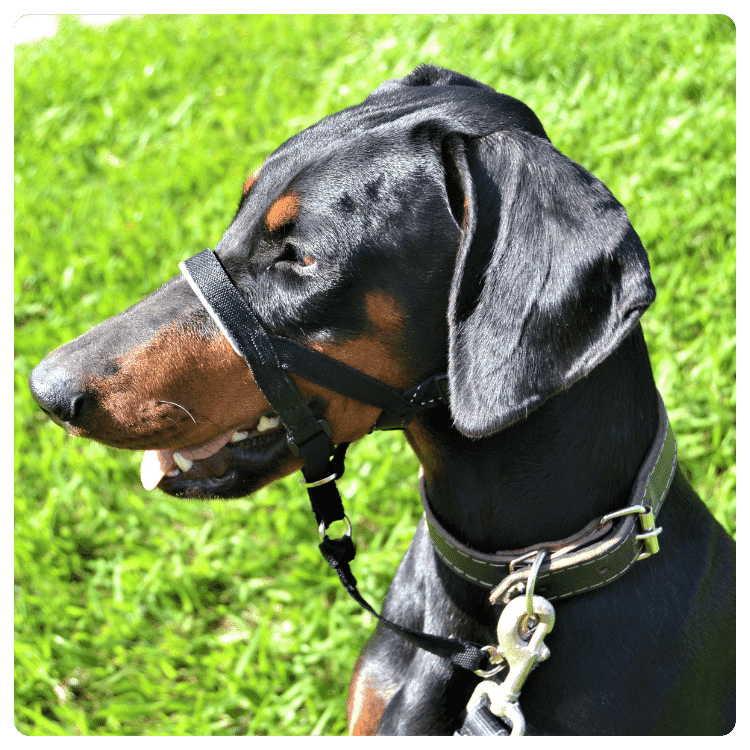
Unlike traditional harnesses, the head halter harness fits over the dog’s head, similar to a horse halter. It offers effective control by gently steering the dog’s head, making it ideal for managing pulling behavior and promoting leash training. The head halter harness provides a humane way to discourage pulling while ensuring comfort and safety for the dog.
- Pros: Effective control, helps with leash training.
- Cons: Some dogs resist wearing it, improper fitting may cause discomfort.
4) Step-In Front Clip Harness
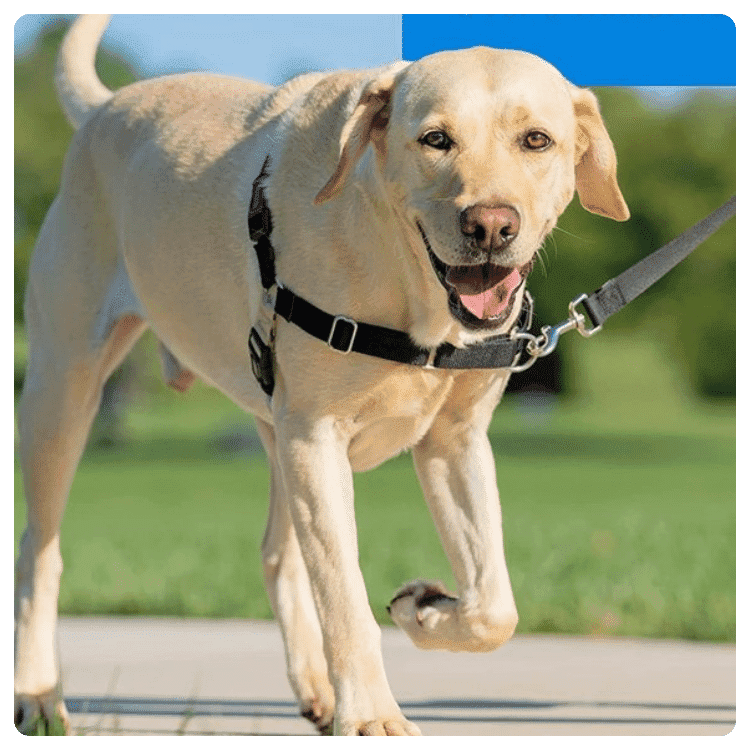
The step-in front clip harness combines the ease of a step-in design with the added control of a front clip attachment point. Dogs step into the harness, and the leash attaches to the front, discouraging pulling behavior by redirecting forward momentum. This harness provides excellent control and stability during walks, promoting proper leash manners and ensuring a comfortable walking experience for both dogs and owners.
- Pros: Easy to wear, good control.
- Cons: Fit may be uncomfortable for some dogs, risk of leash tangling.
5) Martingale Harness
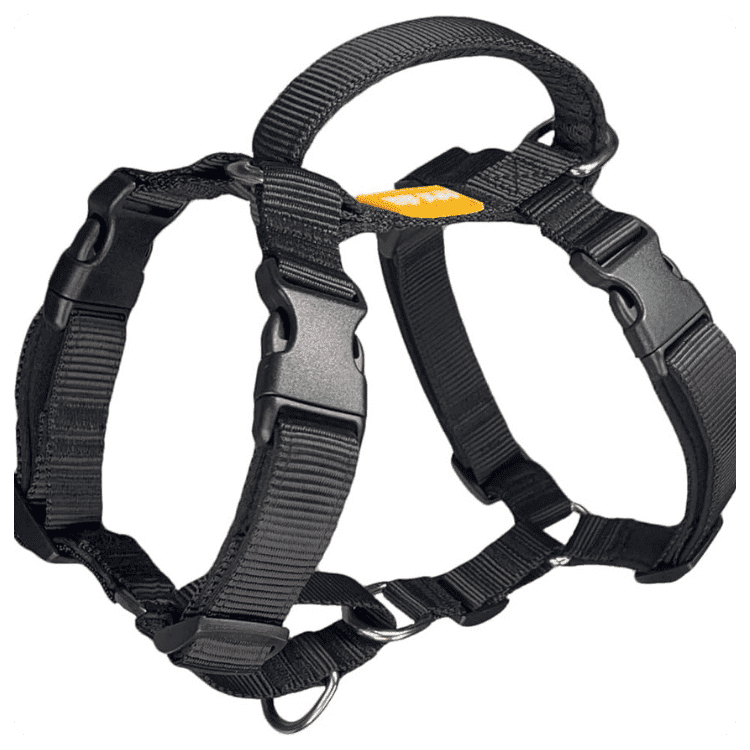
The martingale harness combines the features of a traditional harness with the functionality of a martingale collar. It features a loop that tightens slightly when the dog pulls, preventing them from slipping out of the harness while still providing comfort and control. The martingale harness offers a humane way to discourage pulling behavior, ensuring safety and security during walks or training sessions.
- Pros: Prevents escape, and offers gentle tightening.
- Cons: Requires proper adjustment, not suitable for all dogs.
6) Sled Dog Harness

Designed for pulling activities such as skijoring or mushing, the sled dog harness features a padded chest plate and sturdy construction to distribute weight evenly and prevent injury during pulling tasks. It provides excellent control and stability, allowing dogs to engage in pulling activities safely and comfortably. The sled dog harness is suitable for active dogs who enjoy outdoor adventures and need a reliable harness for pulling sports.
- Pros: Offers control during pulling, and prevents injuries.
- Cons: May be bulky for regular use, with limited versatility.
7) Reflective Harness
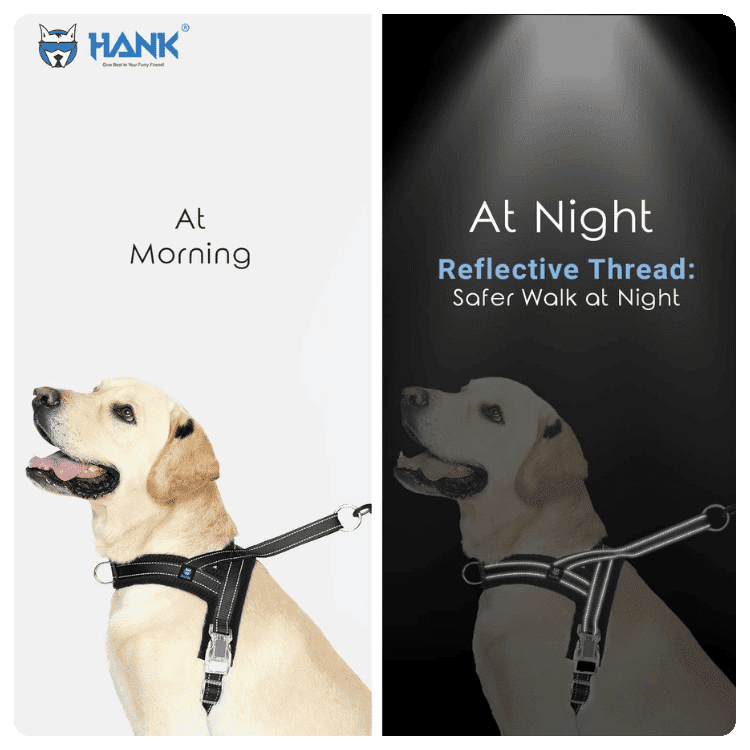
The reflective harness is equipped with reflective strips or panels that increase visibility in low-light conditions, ensuring safety during evening or early morning walks. The reflective elements reflect light, making dogs more visible to motorists and pedestrians, reducing the risk of accidents or collisions. Despite its safety features, the reflective harness remains comfortable and functional, providing reliable control and support during walks.
- Pros: Increases safety, functionality, and stylish.
- Cons: Adds bulk, limited visibility enhancement in daylight.
8) Escape-Proof Harness
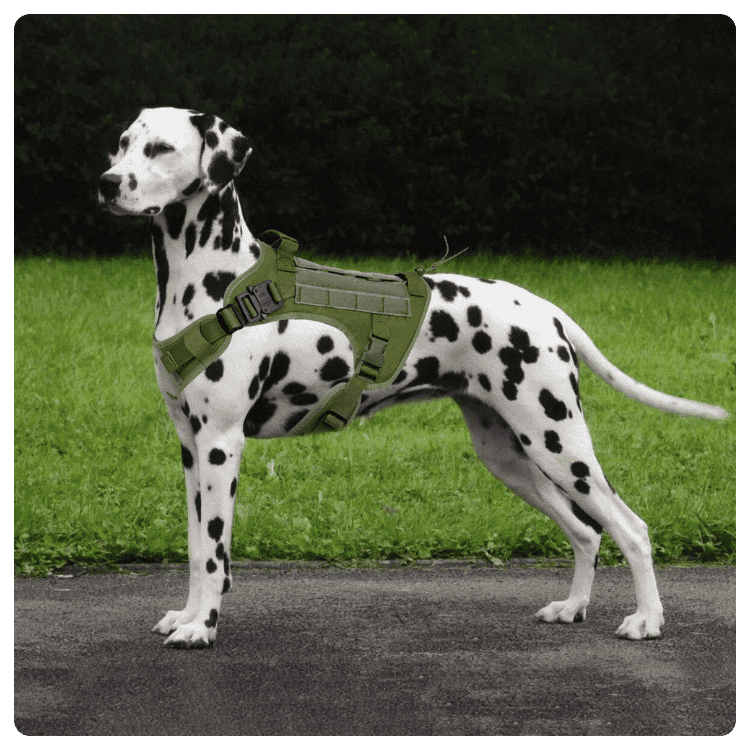
The escape-proof harness is designed to prevent dogs from slipping out, offering additional security and peace of mind during walks or outdoor activities. It features extra straps and security measures to ensure a snug and secure fit, reducing the risk of escape or slipping. Despite its secure design, the escape-proof harness remains comfortable and adjustable, providing dogs with freedom of movement and flexibility while ensuring safety and control.
- Pros: Enhances safety, and provides additional security.
- Cons: May be complex to adjust, and extra straps could be uncomfortable.
9) Fashion Harness
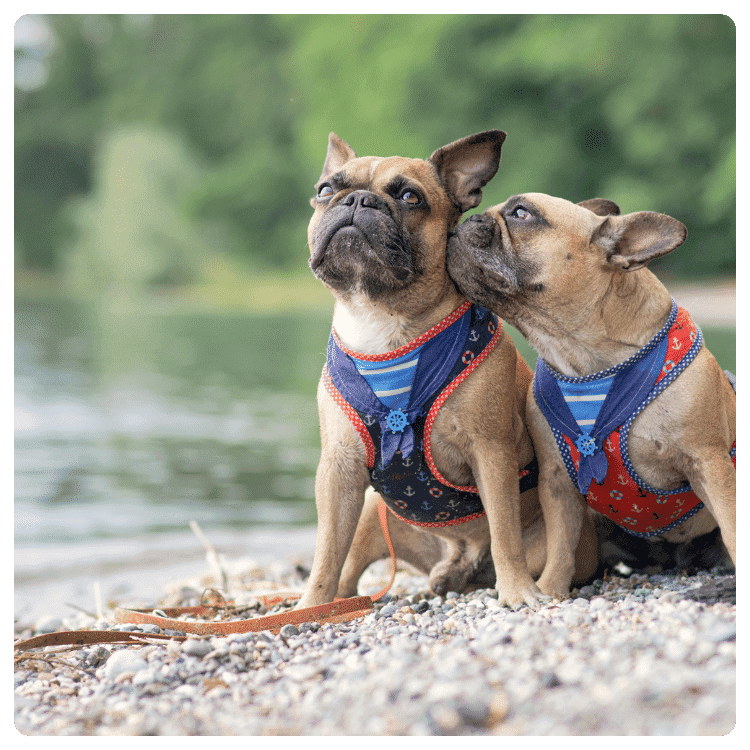
The fashion harness comes in a variety of colors, patterns, and styles, allowing dogs to express their unique personality and sense of style. It combines fashion and functionality, providing comfort and support during walks while adding a touch of flair to your dog’s wardrobe. Despite its stylish design, the fashion harness remains practical and durable, offering reliable control and stability during outdoor adventures.
- Pros: Matches dog’s personality, functional and stylish.
- Cons: Style may be prioritized over function, limited options for specific needs.
10) No-Pull Harness
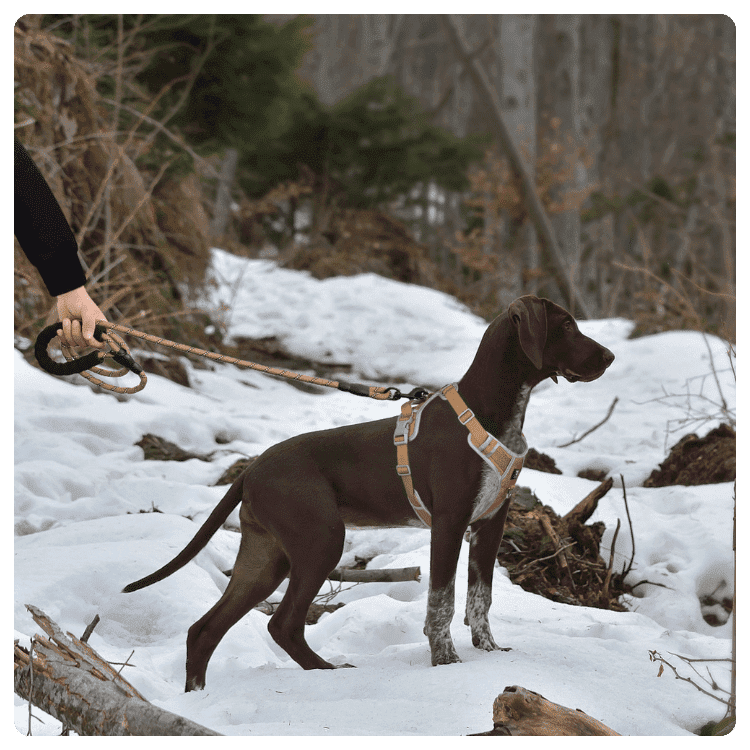
The no-pull dog harness is specifically designed to discourage pulling behavior, offering a humane and effective solution for leash training. It features a front-clip attachment point that redirects forward momentum, discouraging pulling and promoting proper leash manners. The no-pull harness provides gentle training and control, ensuring a comfortable and enjoyable walking experience for both dogs and owners.
- Pros: Effectively discourages pulling, and offers gentle training.
- Cons: Dogs may need time to adjust, and require consistent training.
Benefits of Using a Dog Harness
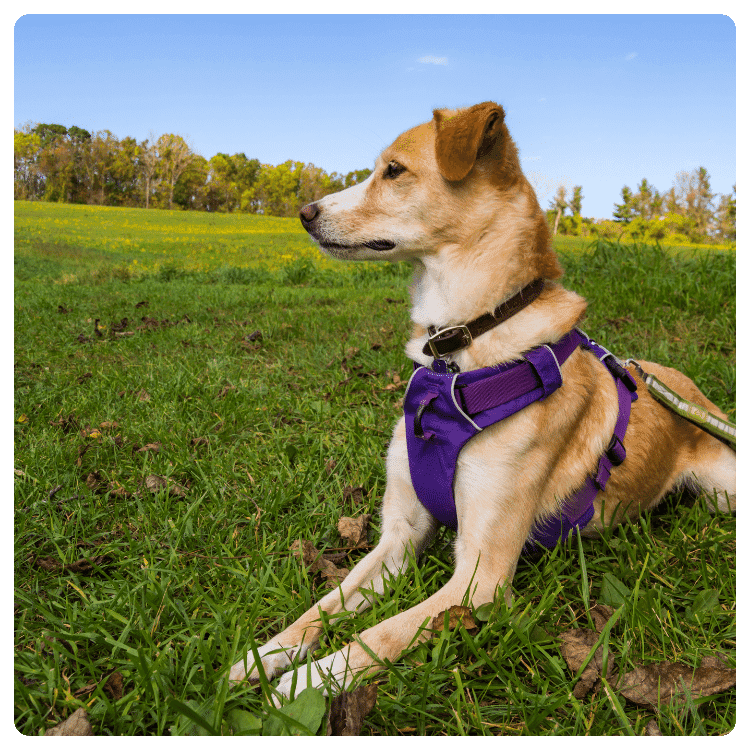
- Safety: Dog harnesses provide better control during walks, reducing the risk of your dog pulling away or escaping. Unlike collars, which can put pressure on the neck and potentially cause injury, harnesses distribute pressure more evenly across the chest and back, minimizing strain on sensitive areas. This helps to prevent injuries such as tracheal damage or neck strain, particularly in dogs prone to pulling or lunging.
- Comfort: Harnesses are designed to be comfortable for dogs to wear during walks or outdoor activities. By distributing pressure evenly across the body, harnesses prevent strain on the neck and reduce discomfort associated with pulling on a collar. This is especially beneficial for dogs with respiratory issues, brachycephalic breeds, or those prone to neck injuries. Additionally, harnesses are available in various materials and designs, allowing you to choose the most comfortable option for your dog’s specific needs.
- Training: Harnesses can aid in leash training, particularly for dogs that tend to pull or exhibit leash-reactive behavior. Harnesses with front-clip attachment points, such as no-pull harnesses, encourage dogs to walk politely by redirecting their forward momentum towards you when they pull. This promotes positive leash manners and reinforces desired behaviors, making walks more enjoyable for both you and your dog. Additionally, harnesses provide a sense of security and control, which can help anxious or reactive dogs feel more comfortable and confident during training sessions.
Dog Collar Or Dog Harness: What Does Your Dog Need?
Deciding between a dog collar and a dog harness depends on various factors, including your dog’s size, breed, behavior, and individual needs. Here’s a breakdown to help you determine what’s best for your furry friend:
1) Collar
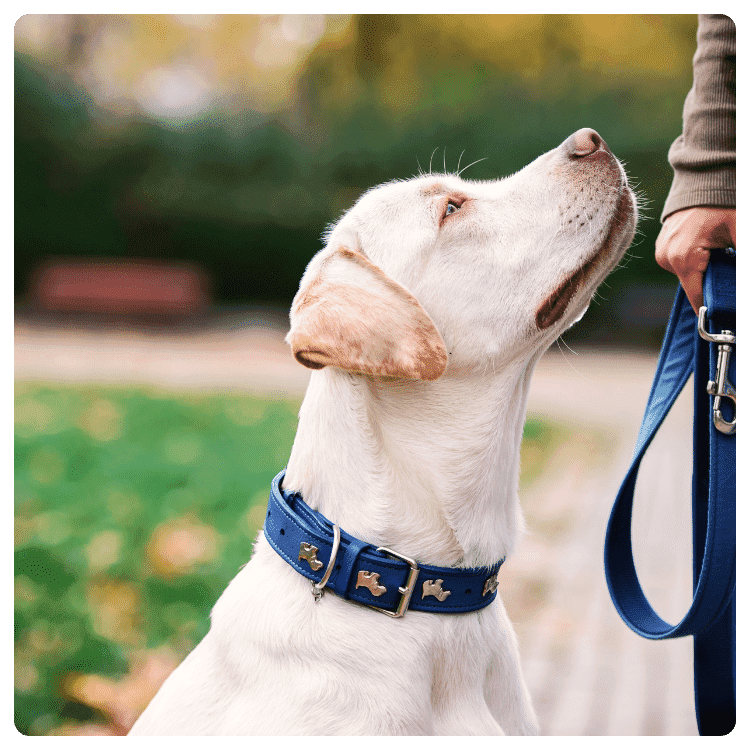
Advantages:
- Lightweight and less restrictive, suitable for small dogs or those with short coats.
- Ideal for attaching ID tags and licenses, ensuring your dog can be easily identified if they wander off.
- Offers a quick and convenient way to control your dog during short walks or potty breaks.
Disadvantages:
- Neck Injury Risk: Collars can put pressure on the neck, potentially leading to injuries such as tracheal damage, particularly in dogs that pull or lunge on the leash.
- Restricted Breathing: In breeds with respiratory issues or brachycephalic breeds (short-nosed breeds), collars can exacerbate breathing difficulties.
- Escaping: Some dogs may slip out of collars, especially if they have a slender neck or are skilled at backing out of them.
- Limited Control: Collars provide less control compared to harnesses, making them less suitable for dogs that pull strongly or exhibit leash-reactive behavior.
2) Harness

Advantages:
- Distributes pressure evenly across the chest and back, reducing strain on the neck and minimizing the risk of injury.
- Provides better control, especially for dogs that pull or exhibit leash-reactive behavior.
- Ideal for dogs with respiratory issues, brachycephalic breeds, or those prone to neck injuries.
- Offers additional attachment points for leashes, providing versatility and customization options.
Disadvantages:
- Adjustment Time: Some dogs may take time to adjust to wearing a harness, particularly if they’re not used to the feeling of straps around their body.
- Bulkiness: Harnesses can be bulkier and more complex to put on compared to collars, especially for dogs with long or dense coats.
How to Choose the Right Harness for Your Dog
Choosing the right harness for your dog is essential for their comfort, safety, and overall well-being. Here’s how you can make an informed decision:
Size and Fit
- Measure Your Dog: Use a flexible tape measure to measure around your dog’s neck, chest, and torso. Take note of the measurements and compare them to the sizing chart provided by the harness manufacturer.
- Proper Fit: Ensure the harness fits snugly but not too tight. You should be able to fit two fingers comfortably between the harness and your dog’s body. Make adjustments as needed to achieve the perfect fit.
- Check for Movement: Once the harness is on, check for any movement or shifting. The harness should stay in place without sliding around or chafing your dog’s skin.
Material and Durability
- Quality Materials: Choose a harness made from high-quality materials that are durable and comfortable for your dog. Look for options with sturdy hardware, reinforced stitching, and breathable padding.
- Consider Activity Level: If your dog is highly active or enjoys outdoor adventures like hiking or running, opt for a harness that can withstand rough use and provide adequate support and protection.
Type and Purpose
- Walking Harness: For everyday walks and outings, a standard walking harness with back-clip or front-clip attachment points may be sufficient. Consider factors such as your dog’s size, behavior, and leash manners when selecting the type of harness.
- Hiking Harness: If you frequently take your dog hiking or on outdoor adventures, choose a harness specifically designed for rugged terrain and extended wear. Look for features such as reflective elements, adjustable straps, and padded chest and belly panels for added comfort and safety.
- Training Harness: For dogs undergoing leash training or those prone to pulling, consider a no-pull or head halter harness. These harnesses provide additional control and can help discourage pulling behavior while promoting positive leash manners.
- Special Needs Harness: Some dogs may have special needs or health conditions that require a custom-fitted or specialized harness. Consult with your veterinarian or a certified dog trainer to determine the best harness for your dog’s unique requirements.
How to Properly Fit and Adjust a Dog Harness
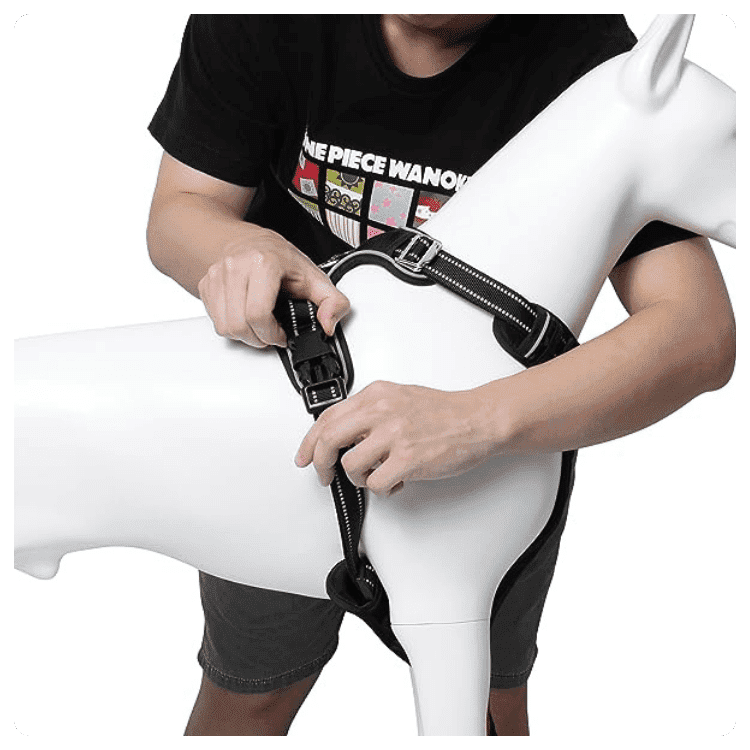
Here’s a detailed guide on properly fitting and adjusting a dog harness, along with common mistakes to avoid:
Step-by-Step Guide:
- Select the Right Size: Choose a harness size based on your dog’s measurements, referring to the manufacturer’s sizing chart.
- Adjust Straps: Loosen all straps before putting on the harness to ensure it’s fully open and ready for your dog to step into.
- Put the Harness On: Encourage your dog to step into the harness with one paw in each loop. Lift the harness over your dog’s back, ensuring the chest plate sits comfortably against their chest.
- Adjust Chest Strap: Secure the chest strap and adjust it to fit snugly around your dog’s chest. You should be able to fit two fingers comfortably between the strap and your dog’s body.
- Adjust Back Strap: Secure the back strap and adjust it to fit snugly across your dog’s back. Again, ensure you can fit two fingers comfortably between the strap and your dog’s body.
- Check for Comfort and Range of Motion: Once the harness is on, check for any signs of discomfort or restriction. Your dog should be able to move freely without any rubbing, chafing, or pinching.
- Secure Buckles and Clips: Ensure all buckles and clips are securely fastened to prevent accidental escapes or injuries.
- Check Fit Regularly: Periodically check the fit of the harness as your dog grows or gains/loses weight. Make adjustments as needed to maintain a proper fit.
Common Mistakes to Avoid:
- Improper Sizing: Choosing the wrong size harness can result in discomfort or ineffective control. Always measure your dog’s neck, chest, and torso accurately and refer to the sizing chart provided by the manufacturer.
- Incorrect Adjustment: Failing to adjust the straps properly can lead to a loose or tight fit, causing discomfort or allowing your dog to slip out of the harness. Take the time to adjust each strap to achieve a snug and secure fit.
- Too Tight or Too Loose: A harness that is too tight can restrict your dog’s movement and cause discomfort, while a harness that is too loose may slip or chafe. Ensure the harness fits snugly but allows your dog to move comfortably.
- Ignoring Signs of Discomfort: Watch for signs of discomfort such as excessive panting, reluctance to move, or attempts to remove the harness. If you notice any signs of discomfort, reevaluate the fit and make necessary adjustments.
- Neglecting to Check Regularly: Your dog’s body shape may change over time due to growth, weight gain, or muscle development. Regularly check the fit of the harness and make adjustments as needed to ensure optimal comfort and safety.
Training Your Dog to Use a Harness
Getting your dog comfortable with wearing a harness is essential for their safety, comfort, and overall well-being. Harnesses provide better control and reduce the risk of injury compared to traditional collars, making them an important tool for leash training and outdoor activities. By properly introducing and training your dog to use a harness, you can ensure a positive experience and enjoyable walks for both you and your furry companion.
Techniques
- Introduce the Harness Gradually: Start by allowing your dog to sniff and inspect the harness while it’s lying on the ground. Offer treats and praise to create positive associations with the harness.
- Positive Reinforcement: Use treats, praise, and rewards to encourage your dog to approach and interact with the harness. Gradually move from touching to putting on the harness, rewarding each step of the process.
- Desensitization: Gradually increase the duration your dog wears the harness, starting with short periods and gradually extending the time. Offer plenty of praise and rewards for calm behavior.
- Practice Handling: Touch your dog’s body and manipulate the harness gently to get them used to the sensation. Avoid forcing the harness on or restraining your dog if they show signs of discomfort or resistance.
- Associate with Positive Experiences: Pair putting on the harness with enjoyable activities such as going for walks, playing games, or receiving treats. This helps your dog associate the harness with positive experiences.
- Use Distraction Techniques: If your dog becomes anxious or resistant to the harness, try distracting them with toys, treats, or engaging activities to redirect their focus.
- Take it Slow: Every dog is different, so be patient and take training at your dog’s pace. If your dog shows signs of stress or discomfort, take a step back and try again later.
- Consistency is Key: Be consistent with your training efforts and practice regularly to reinforce positive behaviors. Make putting on the harness a routine part of your dog’s daily activities.
- Seek Professional Help if Needed: If your dog struggles with harness training or exhibits extreme anxiety or fear, consider seeking guidance from a professional dog trainer or behaviorist for additional support and advice.
By using these techniques and taking a patient, positive approach to training, you can help your dog become comfortable and confident wearing a harness, setting the stage for enjoyable walks and outdoor adventures together.
Frequently Asked Questions
Q1: Are dog harnesses better than collars for walking?
Yes, dog harnesses are generally considered safer and more comfortable for walking than collars, especially for dogs prone to pulling or those with respiratory issues.
Q2: How do I know if my dog needs a harness?
If your dog pulls on the leash, exhibits discomfort with a collar, or has respiratory issues, a harness may be a better option.
Q3: Will a harness stop my dog from pulling on the leash?
While a harness can help reduce pulling behavior, it may not stop it entirely. Consistent training and positive reinforcement are key to addressing leash pulling.
Q4: Can I leave a harness on my dog all day?
It’s not recommended to leave a harness on your dog all day, as it may cause discomfort or chafing. Remove the harness when your dog is indoors or during rest periods.
Q5: How do I measure my dog for a harness?
Measure your dog’s neck girth, chest girth, and back length to ensure a proper fit. Refer to the manufacturer’s sizing guide for specific instructions.
Q6: What is the best type of harness for a small dog?
For small dogs, a harness with a step-in or vest design may be ideal, providing extra support and comfort.
Q7: Are harnesses safe for puppies?
Yes, harnesses are safe for puppies, but choose one specifically designed for their size and age. Ensure it fits snugly without restricting movement.
Q8: Can I use a harness for training my dog?
Yes, harnesses can be used for training purposes, especially for teaching leash manners and reducing pulling behavior.
Q9: How do I clean and maintain a dog harness?
Clean your dog harness regularly by hand washing with mild detergent and air drying. Check for signs of wear and tear, and replace as needed.
Q10: Can I use a harness for my elderly or disabled dog?
Yes, there are harnesses designed specifically for elderly or disabled dogs, providing extra support and stability during walks or mobility assistance. Choose one with padded straps and adjustable features for comfort.
Conclusion
In this blog, we’ve discussed the importance of choosing the right harness for your dog and ensuring they are comfortable and properly trained to use it. We covered key points such as measuring your dog for the correct size, selecting high-quality materials, and matching the type of harness to your dog’s specific needs and activities. Additionally, we provided step-by-step guidance on fitting and adjusting a harness, as well as training techniques to acclimate your dog to wearing it.
Harnesses offer numerous benefits, including better control, reduced risk of injury, and improved comfort compared to traditional collars. By following proper fitting and training methods, you can ensure a positive experience for both you and your furry friend during walks and outdoor adventures.











































